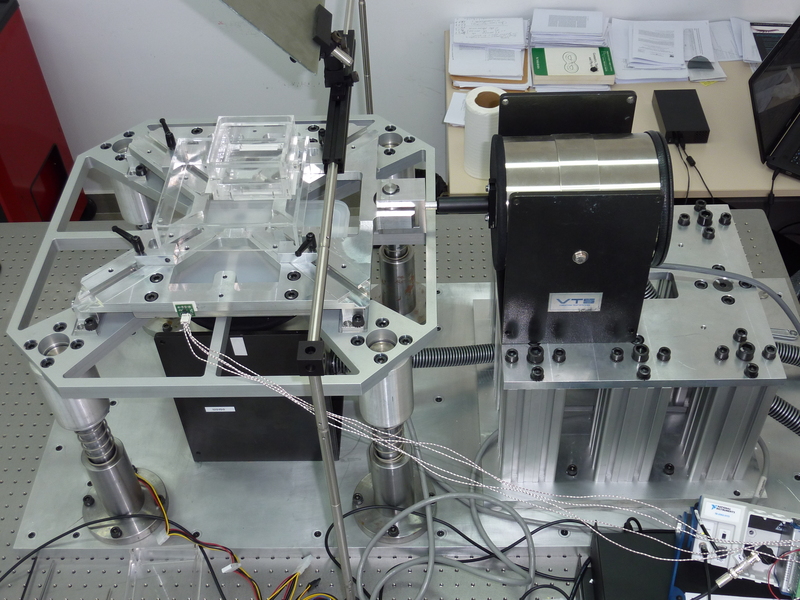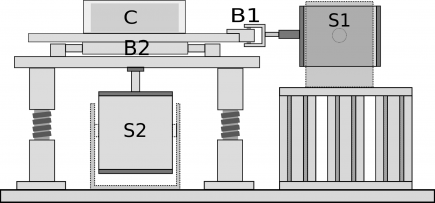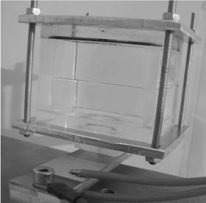Fluids Laboratory
The current set-up allows fluid experiments in various configurations using arbitrary combinations of horizontal and vertical forcing.
Fluid is held in an open transparent acrylic box (C) with interior cross-section between 3cm and 20cm, and fluid depth of 2-5cm. The working fluid is either water or DC200 silicone oil with kinematic viscosity between 5cSt and 50cSt. A sharp edge (step) coated with an anti-wetting agent is used to pin the contact line when desired. The container is attached to a horizontal platform that is driven by an electromagnetic shaker (S1). The platform and container slide together in rigid fashion along a dual sliding bearing system (B2). A second vertically oriented electromagnetic shaker (S2) is used to vibrate the heavier platform underneath. The bearing joint (B1) is designed to reduce as much as possible the coupling between vertical and horizontal excitation. The entire experiment rests on a 2m x 1.25m (Thorlabs) optical table with passive vibration isolation supports, and is controlled via a computer equipped with LabView software.
The laboratory facilities include machining tools, and various electrical and optical equipment like a high-speed camera (Redlake MotionPro X3) and an infrared LASER (HSI 5000).
Recent microgravity experiments (part of the ESA Fly Your Thesis! 2016 campaign) utilized piezoelectric actuators in a bender configuration to impart vibrations between 50Hz and 12kHz.




